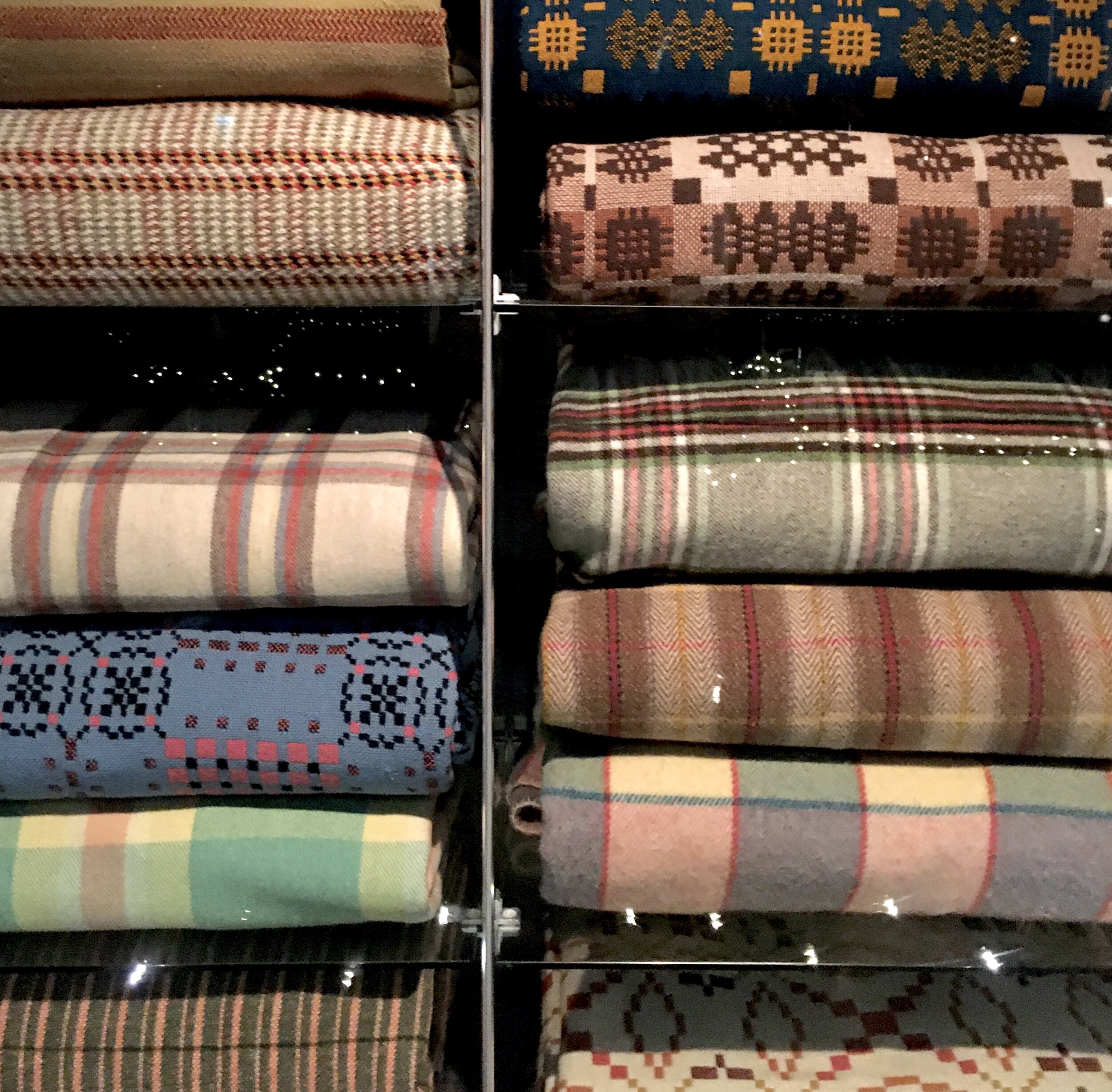Museum musings
I recently had the pleasure to visit the National Wool Museum, which is hidden away in a remote welsh valley. As a lover of all things wool, this had been on my ‘to visit’ list for a while, and it did not dissapoint!
One of the looms, in all her glory.
While most of my family were probably less enthused, as a weaving geek the museum was fascinating. Just being in the building, imagining all the past coming and goings, feeling the heritage and history all around, was enthralling. I took particular notice of the walls, looking for holes where a shuttle may have flown off and hit. It was a real pleasure to chat to the people working the looms, a man took time out from fixing a tension issue (even industrial looms have problems!) to tell us all about the loom and their current projects. It was a rare chance to fawn over the mechanics of how they work and their design, which has gone largely unchanged since the late 1800’s. It was also good to hear all about the museums plans going forward and how they are trying to return to commercial production.
One of my favourite machines - the carder!
I think having engaged in many woolly activities over the past year, has given me a new respect for the machinery that can speed up the process. That is not to say that it is ‘better’ than us, but rather that I have an appreciation for the design of the machinery. Taking raw wool and turning into a useable yarn - or even a finished cloth - is a time intensive process. I will always have a love for creating by hand, and the slow mindfulness it brings, but I do think that there is beauty in machinery also. The knowledge that is required to run the machine remains human. Many weavers will know of the nuances of a loom, little things that create each loom’s character. This translates from hand looms into industrial looms, this knowledge brings an understanding of their characters.
Dyes Galore
One of my favourite parts of the visit, was to see such a varied range of natural dyes. Just next to the car park, is the natural dye garden, full of an abundance of dye plants. Japanese Indigo, dyer’s chamomile, yarrow, dahlias and more. It was a pleasure to see that all growing together and an inspiration for my own garden, which has been sadly neglected this year. There’s always next year right? Inside, was this fabulous display of naturally dyed yarns, which again was an inspiration into just how many colours you achieve. It has definitely inspired me to be a little more adventurous and ambitious with my natural dye experiments - both in the garden and the pot!
A vast array of welsh woollen textiles on display.
Of course, a visit to a welsh mill would not be complete with out mentioning the beautiful blankets. I am a massive fan of the traditional Carthenni or welsh tapestry blanket. Woven in a double weave – two interlocking layers of cloth, with bold colours and block patterns, these blankets have a timeless design. Traditionally, they were given as wedding presents, passed down through time as heirlooms. At one point these blankets were manufactured all over Wales, now there are only a number of woollen mills left. Each mill developed its own signature style or pattern of Carthenni, imparting a sense of ownership and identity.
At the Wool Museum there were a number of tapestry blankets on display, as well as the Melin Teifi mill next door. Melin Teifi still produce carthenni commercially and style and pattern of these blankets is so distinctive. I remember attending a talk by Laura Thomas last year, whereby she talked of the magic of double cloth. She spoke of how, as a child, she was fascinated by their reversible patterns. I can relate so much to this, double cloth has always enchanted me, I could never quite wrap my head around how it was formed. Now, I understand the technicalities of weaving double cloth and the structures needed to create it, but it still holds a magical quality. Whenever I weave double cloth, there’s an immense satisfaction alongside a deep joy, when it comes off the loom and it’s turned over to reveal a whole other design. I hope never to lose that magic and wonder of weaving.
A book of samples in the museum exhibition.
If you find yourself anywhere near south-west Wales, the Wool Museum is definitely worth the effort. For those who are interested in textiles, weaving and wool, it was a humbling trip through history and a chance to ogle beautiful machines and textiles.
This Blog post is the first of a series to celebrate the Campaign for Wool’s Wool Week. Each week of October I’ll have new posts diving into aspects of wool and its history, properties and uses. Sign up to my newsletter to be notified when the next post is up!





